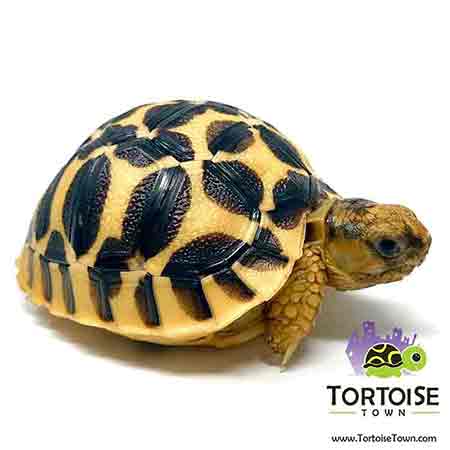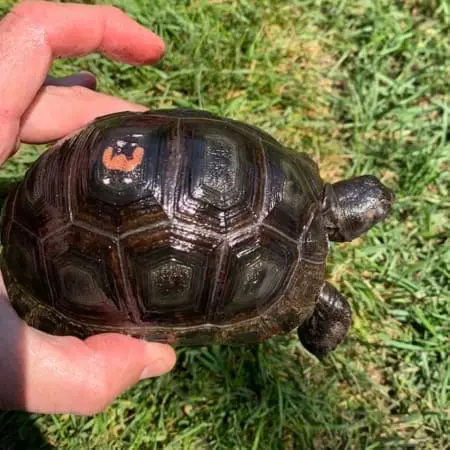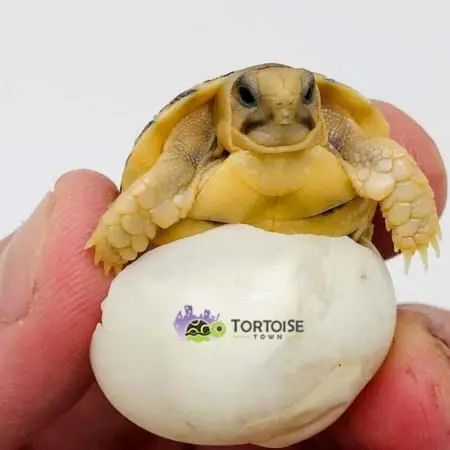Red Foot Tortoise Care, Humidity, Diet & Baby Red Foot Tortoises
Red foot tortoises are colorful, charismatic forest tortoises from South America. Their bright head and leg markings, curious personalities and moderate size make them a favorite among keepers who can provide the warm, humid environments they require. Unlike arid grassland species, red foots prefer more moisture, more shade and a slightly more varied diet.
buy tortoise online because they offer captive-bred red foot tortoise babies that are already accustomed to proper humidity levels, UVB lighting and species-appropriate foods.

Natural Habitat of Red Foot Tortoises
Red foot tortoises inhabit tropical and subtropical forest regions of South America. They live in areas with dappled light, leaf litter, rotting logs and high humidity. Their habitat is not as dry and open as that of Sulcata or leopard tortoises; instead, it is lush, shaded and full of plant matter in various stages of decay.
Captive red foot tortoises do best in enclosures that reflect this environment—warm, humid and partially shaded with plenty of hides, leaf litter and naturalistic décor.
Red Foot Tortoise Size & Temperament
Red foots are medium-sized tortoises that strike a nice balance between “too small” and “giant.” They are often described as outgoing and inquisitive, interacting with their environment and keepers more than some shyer species.
- Adult shell length: Typically 10–14 inches.
- Lifespan: 40+ years with consistent care.
- Temperament: Curious, often bold once established.
Red Foot Tortoise Enclosure Setup
Indoor Enclosures
Indoors, red foot tortoises need large, humid enclosures that still provide strong heat and UVB. Closed or semi-closed chambers can help hold humidity while allowing for ventilation.
- Provide a footprint of at least 4 ft x 2 ft for a single juvenile or small adult (bigger for larger adults).
- Maintain a basking area around 90–95°F.
- Keep ambient temperatures in the mid-70s to mid-80s°F.
- Maintain humidity around 70–80% with moist substrate and misting.
- Use a soil and leaf-litter style substrate that holds moisture without becoming swampy.
- Install high-quality UVB lighting even though the species is forest-associated.
Outdoor Enclosures
In warm, humid climates, red foot tortoises can enjoy outdoor pens during part of the year. Provide plenty of shade, hides and plant cover to protect them from direct, intense sun and predators.

Red Foot Tortoise Diet
Red foot tortoises have more varied diets than strictly grassland species. They still require a strong base of leafy greens and high-fiber plant matter, but can handle more variety, including some fruit.
Common diet components include:
- Dark leafy greens (collard, mustard, turnip, dandelion)
- Edible weeds and broadleaf plants
- Occasional fruit such as papaya or berries (in moderation)
- Commercial tortoise diets formulated for forest or omnivorous tortoises (used sparingly)
As with all tortoises, avoid processed human foods and animal protein. Offer calcium supplements regularly and provide appropriate UVB to support shell and bone health.
Humidity, Hydration & Shell Health
Red foot tortoises absolutely depend on proper humidity to stay healthy. Dry, hot conditions lead to dehydration, pyramiding and respiratory issues. By contrast, warm and properly humid environments paired with good ventilation allow for smooth shell growth and normal behavior.
- Maintain enclosure humidity around 70–80%.
- Offer shallow water dishes that are easy to climb into and out of.
- Provide regular warm soaks for juveniles.
- Use deep, slightly moist substrates and leaf litter to hold moisture.
Breeding & Raising Baby Red Foot Tortoises
Breeding red foot tortoises requires stable husbandry and a long-term commitment. Adults should be in excellent health before pairing. Males may court females with head bobbing and nudging, and females will seek nesting sites with slightly moist, diggable soil.
Eggs are carefully excavated and incubated at steady temperatures. After hatching, babies move into warm, humid nursery setups with frequent soaks, shallow water dishes and finely chopped greens plus occasional small fruit offerings, depending on your specific diet strategy.
Red Foot Tortoises as Pets
Red foot tortoises are popular because they are interactive and visually striking. They are often more visible and curious than some shy grassland species, especially when kept in enclosures that allow them to feel secure. For keepers willing to maintain humidity and warmth, red foots can become beloved, long-term companions.
Where to Buy a Red Foot Tortoise
As always, the best experience starts with a healthy, captive-bred baby. Many people begin by searching for a tortoise for sale and soon realize they also need to carefully choose where to buy tortoise that has been raised correctly in the right climate conditions.
Captive-bred red foot tortoise babies from an experienced tortoise breeder adapt quickly and are already familiar with the humidity, diet and UVB they need. Starting with a well-started baby gives you the freedom to focus on fine-tuning your enclosure and routines rather than fixing preventable health problems.




